by Lisa Cooke | Jan 28, 2019 | 01 What's New, Scottish Genealogy |
What a treat it is to have Amanda Epperson, PhD joining us here on Genealogy Gems! Amanda is an expert on Scottish genealogy research, and is the author of The Family Tree Scottish Genealogy Guide. If you even suspect that you have Scottish roots keep reading because Amanda is about to share some of her top strategies to help you find your ancestors in Scottish records.
Scottish Genealogy Starts with Scottish Records
If your love of tartan, bagpipes, and kilts equals your love of family history research, you are likely hoping to find an ancestor who was born in Scotland. Or perhaps nothing would surprise you more than to find a Scottish ancestor. In either case, the next step is to find this ancestor in Scottish records.
As with all immigrants, the first step to finding them in their homeland is to research their lives extensively in America before searching for them in Scottish records. Once you do that, use these three strategies to locate your ancestor in Scottish records.
1. An Important Divide in Scottish Genealogy
First, determine whether your Scottish-born ancestor arrived in the United States before or after 1855, the year Statutory (or Civil) Registration began in Scotland. This year is an important divide in Scottish Genealogy. Before 1855, you will need to start your research with the Old Parish Records (commonly known as the OPR) and after 1855 you can use the Statutory Records. With this knowledge, you will be able to organize your research and manage expectations of the data you will find. If your ancestors came to America after 1855, then they and their relatives should be included in Statutory records. These records are extremely detailed and each type invariably includes the name of an individual’s parents. Parish records are an amazing resource, but they are not complete and were not well-kept in all parishes. Consequently, many people do not appear in the OPR.
Scottish Parish Records
Indexes for parish records are available at many websites (for example https://www.familysearch.org). Images of these documents can be viewed at your Local Family History Center or an affiliate library (https://www.familysearch.org/locations/). Statutory Registration records (called civil records in the FamilySearch catalog) are partially indexed at FamilySearch and select years are also available at your local Family History Center. ScotlandsPeople (https://www.scotlandspeople.gov.uk/) has a complete set of OPR and Statutory Records available on a pay-per-view basis.
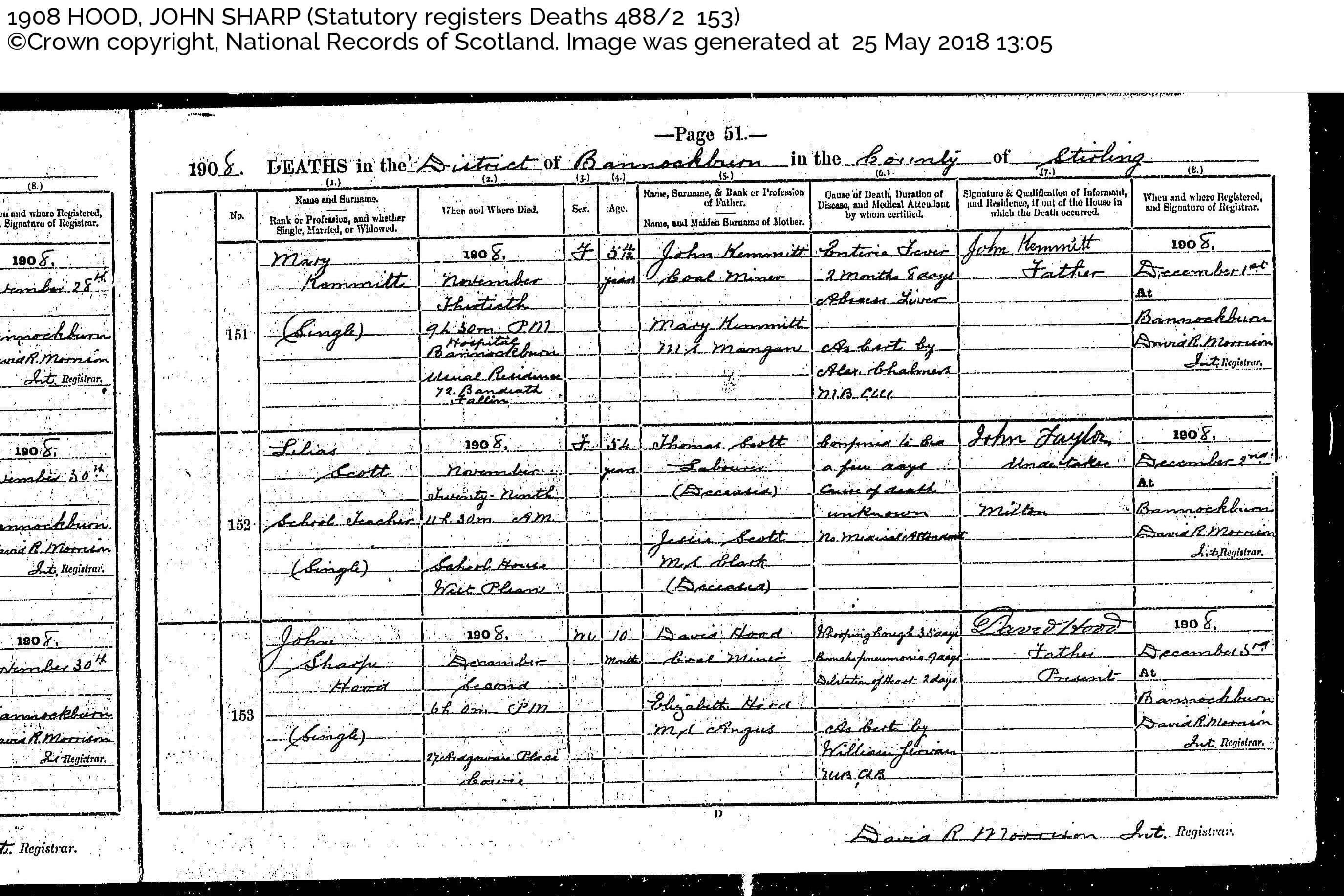
Image above: When you download Statutory records from ScotlandsPeople, like this death record for John Sharp Hood, complete citation information is included. Photo Credit: 1908 Hood, John Sharp (Statutory Register of Deaths 488/2) ©Crown copyright, National Records of Scotland.
2. Determining Your Scottish Ancestor’s Birthplace
Second, determine your ancestor’s Scottish birth place. The name of the parish is best, but you may be able to manage with just the county if you ancestor’s name was uncommon or you know the names of several of their family members. Check available U.S. records for this information. For example: vital records, post-1906 Naturalization records (before this date Naturalizations usually only record the country of origin), passenger lists, county or local histories, or in correspondence. If you are really lucky, you may find your ancestor in the series of books by David Dobson who mines both U.S. and U.K. records for emigrant Scots. Several of his books are available at Ancestry.com and are searchable. Location is a key fact because many Scots have the same name and many surnames (like Smith, Campbell, and Stewart) are quite common. Additionally, the same surname does not guarantee a family relationship, even for more uncommon names.
Many passenger lists record an emigrant’s last place of residence, which for Europeans was their place of birth. However, due to high rates of internal migration in Scotland, this may not be true for many Scottish immigrants. Keep an eye out for other locations associated with you ancestor; also be sure to check if the passenger list records the name and residence of the immigrants nearest relation in the old country. It is possible that this is your ancestor’s actual place of origin.
3. The Importance of Name Variations in Scottish Genealogy
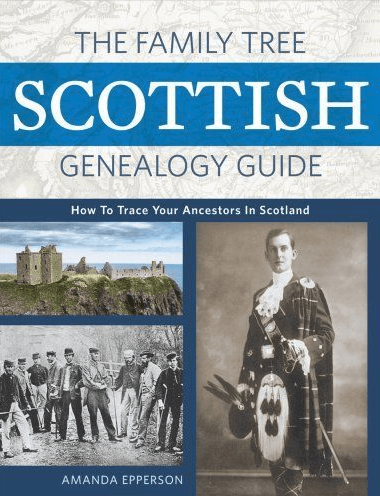
Click the image to get the book (thanks for using our links and supporting the free Genealogy Gems Podcast.
Third, determine all variations of your ancestor’s first and last names, especially if your ancestor was from the Scottish Highlands. In this region, the bulk of the population spoke Scots-Gaelic until the nineteenth century. However, all church records were kept in English, even if the minister spoke Scots-Gaelic. This meant that all Gaelic names, both first and last, needed to be rendered in English. There was often no consistency in how this was done. Some English renderings were reasonably close to the Scots-Gaelic name, but others were inspired by biblical or Latin names. Two commonly interchangeable first names include Donald and Daniel, and Angus and Aeneas. Highlanders also easily changed surnames, especially when moving from the land of one landlord to another. These name changes are often included in parish registers as an “alias” as in McIntosh alias Cattanach. And when Gaelic speakers moved south, they often Anglicized their surnames, so MacThoimish in Inverness became Thomson in Glasgow. You can learn more about interchangeable names in a brief article by Alan G. McPherson (https://www.clan-macpherson.org/museum/documents/alang12.pdf).
Scottish Genealogy Success
While finding any immigrant ancestor can be a challenge, and Scots are no different, there is the advantage that most of the records are in English, are easily available, and many of have been indexed. Following these three basic steps will help you identify your ancestors in Scottish records. Read more about newly available Scottish records here at Genealogy Gems.
Amanda Epperson is the author of the book The Family Tree Scottish Genealogy Guide. Since completing her Ph.D. in history from the University of Glasgow in 2003, Amanda has taught history at the college level, researched and edited family histories, most recently for Genealogists.com, and written articles for a variety of publications including Family Tree Magazine and Your Genealogy Today. She blogs occasionally at the Scottish Emigration Blog.
Disclosure: This article contains affiliate links and Genealogy Gems will be compensated if you make a purchase after clicking on these links (at no additional cost to you). Thank you for supporting Genealogy Gems!
by Lisa Cooke | Nov 23, 2016 | 01 What's New, Findmypast, Scottish Genealogy
ScotlandsPeople has a new look and more free features. Here’s what the makeover involves, and how customers of the former host Findmypast.com are affected.
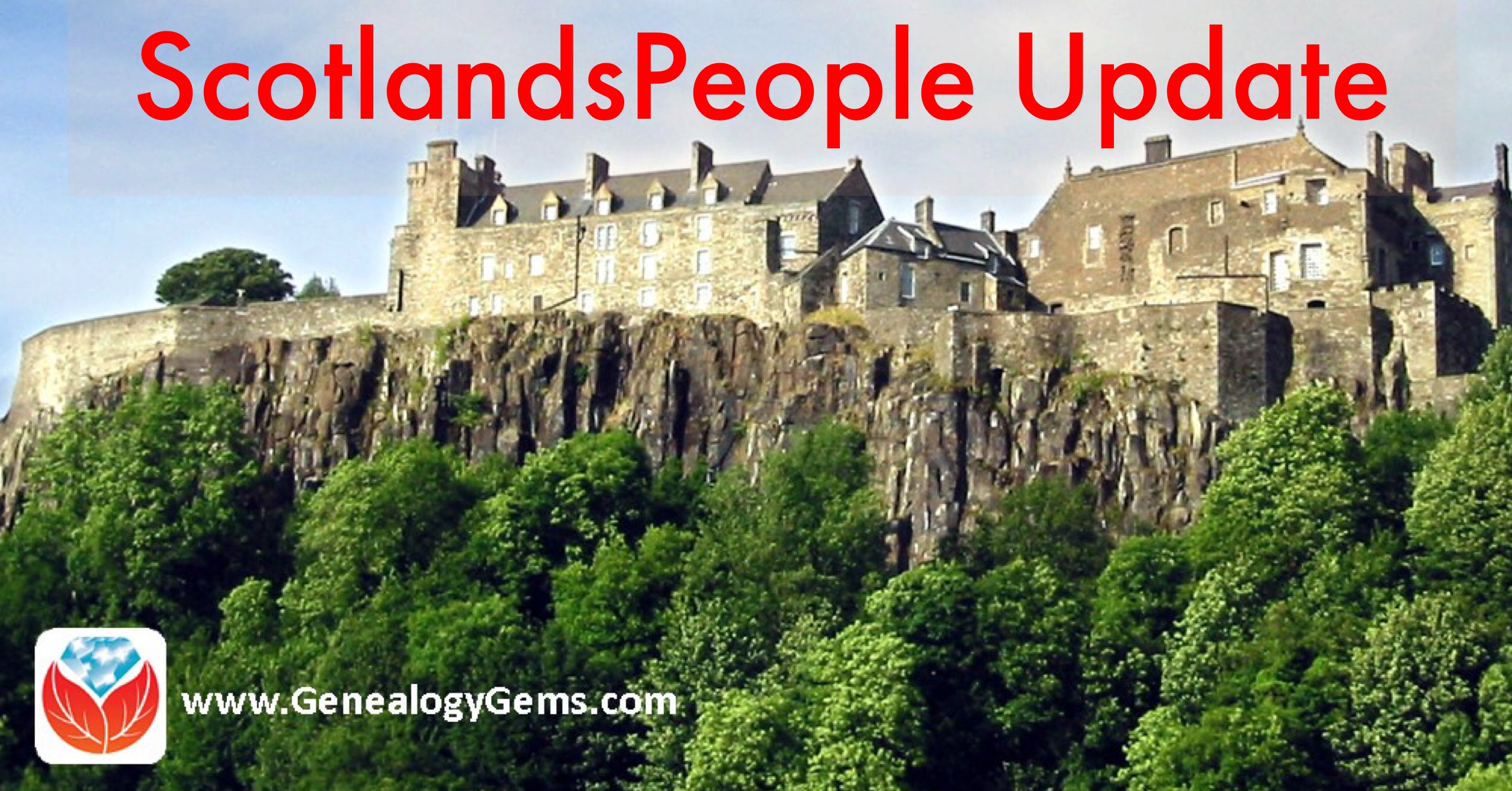 Recently, ScotlandsPeople gained a new site host, after finishing its previous contract with Findmypast.com. ScotlandsPeople is the official Scottish government website for searching government records and archives.
Recently, ScotlandsPeople gained a new site host, after finishing its previous contract with Findmypast.com. ScotlandsPeople is the official Scottish government website for searching government records and archives.
Hundreds of thousands of people use it each year to research their family histories and access documents such as censuses, statutory and parish vital records, valuation rolls, wills and other critical historical records.
New on ScotlandsPeople
ScotlandsPeople has undergone its most extensive overhaul since 2010. It recently relaunched with several new features, including free content and services. Here’s a summary list taken from an article on the site:
- You can now search indexes to records, including statutory records of births, deaths and marriages, free of charge for the first time. (You will be charged when you view or download a record image.)
- The improved site design allows you access across digital devices.
- An enhanced search function makes it easier to locate and view records.
- New features include a quick search for people (across all records indexed by name) or the advanced search for specific types of records.

- You can now link to the Register of Corrected Entries from the relevant entry in a statutory register free of charge.
- Transcriptions of the 1881 census can now be read without charge.
- Indexes to births, marriages and death for 2015 and early 2016 have been added.
- You can now search coats of arms up to 1916.
- There are now more than 150,000 baptism entries from Scottish Presbyterian churches other than the Old Parish Registers of the Church of Scotland. More will be added in the near future, including marriages and burials.
- Over the next few months, more records will be added from the National Records of Scotland, including records of kirk sessions and other church courts.
Effect on Findmypast.com users
So, how did this transition affect Findmypast.com subscribers? Did they lose any access to Scottish records? No, says company rep Jim Shaughnessy: “Nothing is changing from a Findmypast perspective. Because of how Scottish records work, we didn’t have a reciprocal arrangement with ScotlandsPeople; our users didn’t get access to their records. We’ll continue to have the extensive Scottish records we already have, our users aren’t going to lose anything at all.”
 Findmypast.com has Scotland’s census for 1841-1901, indexes to births, baptisms and marriages back to the 1560s, and some other collections. Click here to search Scottish records on Findmypast.com.
Findmypast.com has Scotland’s census for 1841-1901, indexes to births, baptisms and marriages back to the 1560s, and some other collections. Click here to search Scottish records on Findmypast.com.
by Lisa Cooke | Jul 1, 2016 | 01 What's New, Canadian, Findmypast, Records & databases
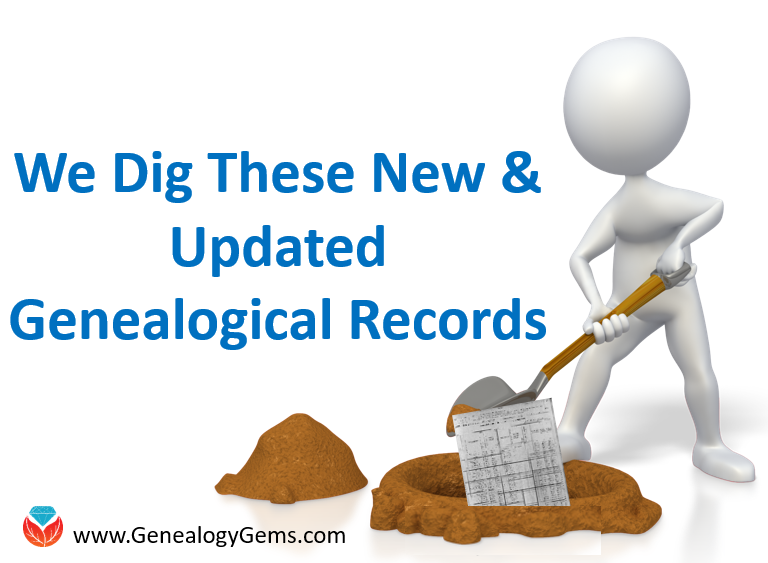
This week’s new record collections reach from sea to shining sea. Keep reading for great genealogical records available for the United States, Scotland, and Canada.
UNITED STATES – RHODE ISLAND – COURT RECORDS
The Rhode Island Historical Society has launched a digital archive entitled “Colonial Justice: Preserving and Digitizing Early Rhode Island Court Records.” These new record collections cover the years of 1729-1812 for the counties of Providence, Kent, and what was known as Kings County (now known as Washington County.) The online records are free and open to the public.
SCOTLAND – MILITARY
In honor of the Battle of the Somme on July 1st, 1916, ScotlandsPeople is offering free access to the stories of five Scots and one French soldier who lost their lives in the Battle. These stories include digital images of several records in which the soldier appears and even some great personal photographs and biographies.
CANADA – CENSUS
MyHeritage is always adding new record collections. This week, they have added the 1911 Canadian Census. This census was conducted in May and June of 1911 and enumerated over 7 million people. Questions asked on this census include: name, relationship to head of household, marital status, birth month and year, age at last birthday, nationality, immigration year, naturalization year, and religion. Be sure to check out these digital images if you have some research to do in Canada.
UNITED STATES, UNITED KINGDOM, AND IRELAND – FREE ACCESS
In case you hadn’t heard, Findmypast is offering free access to their complete record collections for the United States, United Kingdom, and Ireland. This free access began on June 29th and will run through July 6th. Take advantage of over 1 billion online records like naturalizations, marriages, and censuses.
Please share these new record collections!
As always, we hope you feel like sharing this week’s new and updated genealogical records with your friends. (Let them know about free access to Findmypast, too!)

by | Oct 30, 2015 | 01 What's New, Ancestry, FamilySearch, Military, Records & databases, United States
Take a look at our review of new genealogy records online this week for Arkansas, Indiana and Montana, along with Scotland deaths at sea and a Revolutionary War index. For which of your ancestors should you search in these?

ARKANSAS PROBATE. Ancestry’s collection of Arkansas Wills and Probate (1818-1998) has been updated. The collection now includes images for about 96% of Arkansas counties.
(1818-1998) has been updated. The collection now includes images for about 96% of Arkansas counties.
INDIANA RECORDS. A new Ancestry web index to Indiana deaths (1812-2011), hosted by the Marion Public Library, pointed us to more online resources on the library website. These are strongest for Grant County but may extend to other Indiana counties: the Indiana History and Genealogy Database of records in the library’s Indiana Room (marriage, cemetery, obituary, birth, death, funeral home, orphan’s home records and more) and browsable images of The Grant County Medical Society Book.
MONTANA VITAL RECORDS. Nearly a half million births and deaths from the U.S. state of Montana have been added to a free FamilySearch collection. So far, the counties included are Broadwater, Deer Lodge, Jefferson, Lewis and Clark, Powell and Silver Bow.
REVOLUTIONARY WAR SOLDIERS AND SAILORS (U.S.). A browsable group of rosters of Revolutionary War soldiers and sailors (1775-1783) is newly viewable on FamilySearch. State rosters for Alabama, Connecticut, Massachusetts (partial), New Jersey, Vermont and Virginia are included. These materials appear to be sourced from the Museum of the American Revolution.
SCOTLAND DEATHS AT SEA. A new database, Returns of Deaths at Sea, 1902-1905, is now online at Scotland’s People. This data is now complete for Scotland for 1855-1905. The registers list “Scottish seamen and passengers who were reported to the Registrar General for Scotland as having died. When ships sank there were often fatalities, but most of the deaths in British waters were of fishermen who drowned.”
 Thank you for sharing the great news about these new genealogy records online with your friends and genealogy societies! You’re a gem!
Thank you for sharing the great news about these new genealogy records online with your friends and genealogy societies! You’re a gem!
by Lisa Cooke | Nov 19, 2013 | 01 What's New, Ancestry, Census, Family History Podcast, Findmypast, Irish, Records & databases, Research Skills, Technology
 Originally published Fall 2008
Originally published Fall 2008
Republished November 19, 2013
by Lisa Louise Cooke
[display_podcast]
Download the Show Notes for this Episode
Welcome to this step-by-step series for beginning genealogists—and more experienced ones who want to brush up or learn something new. I first ran this series in 2008. So many people have asked about it, I’m bringing it back in weekly segments.
Episode 7: Best Subscription Websites for Genealogy Research, Part 1
In our first segment, my guest is Lisa Alzo, popular genealogy lecturer and writer (now the author of nine books and online genealogy instructor at Family Tree University and the National Institute for Genealogical Studies). We talk about her reasons for researching her family history and what she’s learned in her genealogical journeys (which include international travel in Eastern Europe).
In the second half of the show, we tackle an essential topic: the best subscription sites for family history records. This is a two-part topic: in this episode I talk about the best genealogy websites that require payment to access their core content. In Episode 8, we’ll talk about the fantastic free websites that are out there.
Keep in mind that this episode was recorded a few years ago. As I mention in the show, the online records landscape is constantly changing. Here are a few updates:
- The biggest powerhouse paid subscription website is still Ancestry: it’s just bigger and better than what I originally described. As of fall 2013, they host 11 billion historical records. Member-contributed items include over 50 million family trees and 160 million uploads of photographs, stories and scanned documents. They still have a free 14-day trial membership and multiple subscription options: check out current ones here.
- WorldVitalRecords is still a great website, though it’s grown more slowly. At our republishing date, it boasts over 158 million digitized images, (including US and UK censuses); 300 million names from vital records; 75 million names from military records, over 100 million pages of newspapers dating from 1739; 1.5 million historical maps; 8000 yearbooks and over 30 million tombstone photos. WorldVitalRecords is now part of the MyHeritage.com family of websites. Click here for a free 3-day trial membership.
- Findmypast now has two web storefronts: findmypast.com (recommended for folks in the U.S.) and FindMyPast.co.uk (which specializes in British and Irish roots and records). At last glance in fall 2013, findmypast hosts over 1.5 million family history records. It offers great search options and a budget-friendly pay-per-view model or a more traditional subscription.
- RootsIreland is now home now to over 20 million Irish records.
- Genline.com for Swedish research is still online, though it’s part of Ancestry.com now. It’s home to over 20 million church record images and more.
- Scotland’s People is still your official home for online Scottish records, including an enormous collection of parish records with births and baptisms, banns and marriages and deaths and burials.
- Many other sites support specific topics in genealogy research. An example on my side of the pond is Fold3 (formerly Footnote) for American military records. This site is home to over 400 million total records from the Revolutionary War era forward. Check with others who research families from the same location or ethnic background as your family to see what sites would be perfect for you.
Links
Ancestry
Findmypast.com
Findmypast.uk.com
Fold3
WorldVitalRecords
My website mentioned in the podcast, GenealogyGems.tv, is now better known as www.genealogygems.com. The Genealogy Gems newsletter mentioned in the episode is now my blog, which you can find on my website.




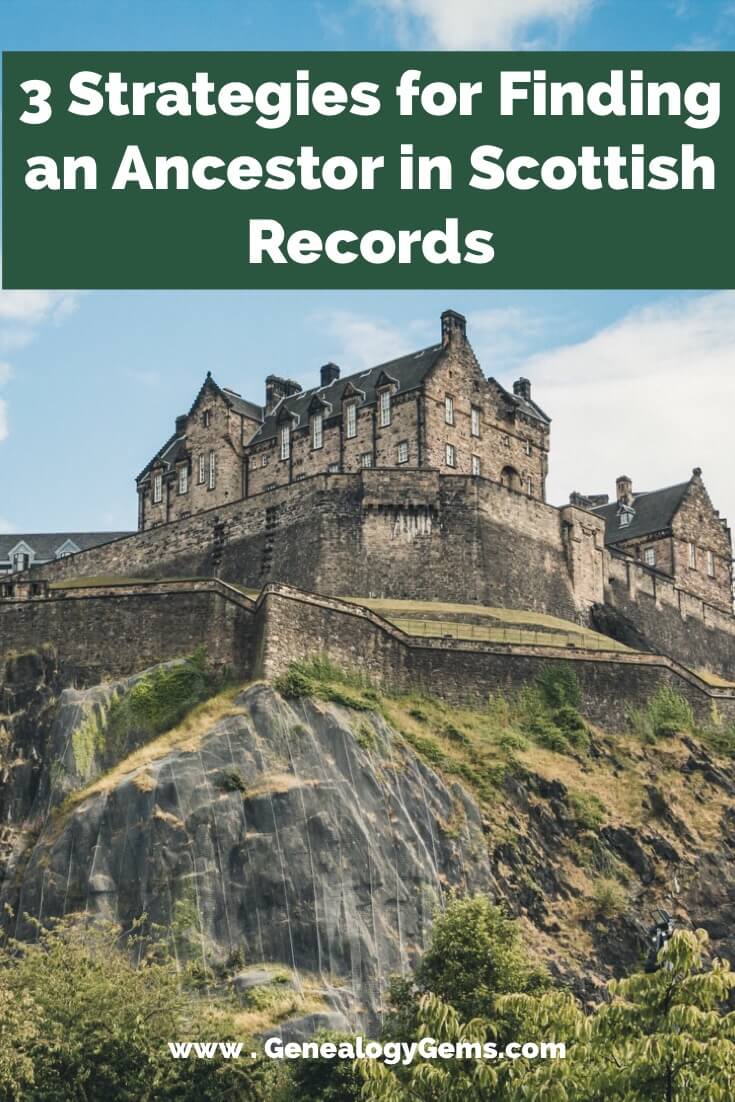
 Recently,
Recently, 









